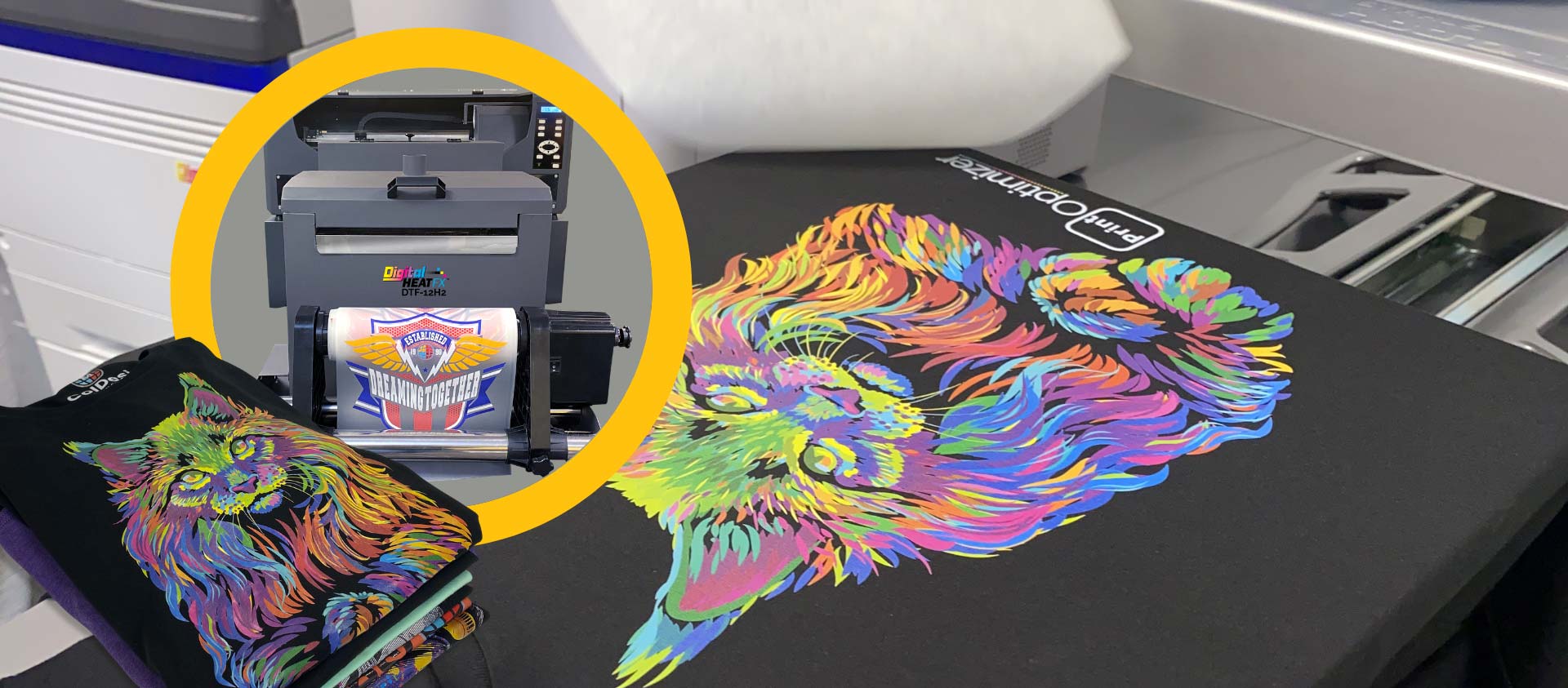Ultimate Guide to DTF Printing Methods for Sensational Fabric Styles
Beginning on the trip of grasping DTF printing methods can open up a world of opportunities for developing aesthetically captivating textile styles. In this overview, we will certainly check out the elaborate information of DTF printing, from comprehending the fundamental essentials to unraveling advanced shade methods that can boost your designs to brand-new heights.
Recognizing DTF Printing Essentials
DTF printing, a process that involves transferring designs from an unique movie to textiles making use of warm and stress, creates the foundation of fabric printing methods. This cutting-edge method permits top quality, vibrant designs to be flawlessly transferred onto numerous textiles with precision and information. The initial step in DTF printing entails developing or choosing a style that will be published onto the fabric. This style is then published onto a special film utilizing a DTF printer, which makes use of specific dyes or pigments to make sure shade precision and toughness.
The last result is a spectacular, long-lasting fabric design that is cleanable, adaptable, and resistant to fading. Generally, comprehending the fundamentals of DTF printing is vital for grasping this modern textile printing strategy.
Choosing the Right Textile Materials
Having established the fundamental concepts of DTF printing methods for textile designs, the following critical consideration exists in picking the appropriate textile products to complement this cutting-edge process properly. Additionally, the stretchability of these products can fit the warmth transfer process included in DTF printing without misshaping the design. By picking the best textile products, designers can make best use of the potential of DTF printing to develop durable and magnificent textile styles.

Mastering the Printing Refine
To stand out in DTF printing methods for fabric designs, grasping the printing process is necessary for accomplishing high-grade and regular results. The temperature, pressure, and period of heat application must be meticulously managed to guarantee correct adhesion of the style to the fabric. By honing each of these steps in the printing process, designers can continually generate long lasting and stunning textile layouts with DTF printing methods.
Enhancing Layouts With Color Strategies

Moreover, trying out color slopes can bring a sense of movement and fluidity to the layout. By mixing colors flawlessly, a gradient result can be attained, adding a dynamic and modern-day touch to the fabric style. In addition, utilizing color obstructing strategies can develop striking and vibrant visuals by juxtaposing different solid colors in distinctive areas of the design.
Furthermore, including metallic or neon colors can provide a attractive and one-of-a-kind component to the fabric design, making it attract attention and show a feeling of vibrancy. When strategically used, these shade strategies can elevate the general visual appeal of textile layouts, making them a lot more unforgettable and exciting.
Troubleshooting Common DTF Printing Issues
After exploring numerous color techniques to boost fabric layouts, it is important to deal with common DTF printing concerns that may emerge throughout the production procedure. One typical concern is poor attachment, which can result from incorrect curing temperature levels or times. To fix this trouble, guarantee that the healing settings are precise which the adhesive utilized appropriates for the particular material being published on. Another regular obstacle is color variances, where shades may appear in different ways than expected. This can be triggered by wrong shade profiles or settings in the printing software application. To tackle this, ascertain the shade setups and profiles to ensure they match the designated layout. In addition, issues with picture clearness and intensity can take place due to low-resolution images or incorrect printing strategies. To resolve this, always use top notch photos and readjust the printing settings for optimal clarity. By understanding these typical issues and carrying out the required troubleshooting steps, you can enhance the total quality of your DTF printed fabric designs.
Conclusion
To conclude, understanding DTF printing strategies is necessary for producing spectacular textile layouts. By comprehending the basics of DTF printing, choosing the appropriate materials, and enhancing layouts with color techniques, one can attain excellent results. It is essential to fix common concerns that may arise throughout the printing process to make certain an effective outcome. With technique and attention to information, one can check over here produce beautiful and one-of-a-kind fabric designs utilizing DTF printing techniques.
DTF printing, a process that entails transferring styles from an unique film to fabrics making use of heat and stress, creates the foundation of textile printing strategies.Having established the foundational concepts of DTF printing techniques for textile styles, the following critical consideration exists in picking the suitable fabric products to enhance this innovative process successfully. By picking the right textile products, developers can optimize the possibility of DTF linked here printing to create spectacular and resilient textile designs.
To excel in DTF printing methods for textile styles, grasping the printing procedure is necessary for attaining regular and high-quality results. DTF hop over to here Printing. By developing each of these steps in the printing process, designers can regularly produce durable and magnificent textile layouts with DTF printing strategies
Comments on “Harnessing the Power of DTF Printing: Techniques for High-Quality Textile Layouts”